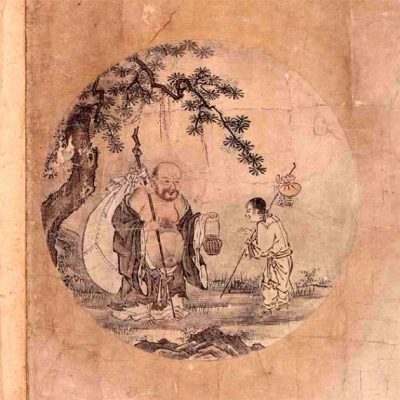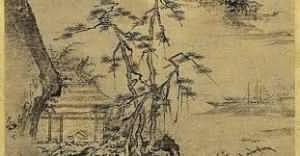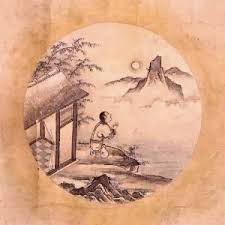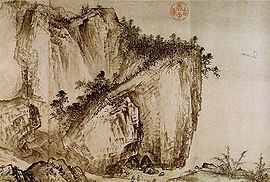Art of Japan and the influence of the Middle Kingdom (China): Xia Gui and Ma Yuan
Lee Jay Walker
Modern Tokyo Times

The Japanese artist Tensho Shubun was inspired by an array of areas related to China. In the realm of art then this notably applies to Xia Gui and Ma Yuan. Other notable areas relate to Confucianism and the natural flows of various Buddhist schools of thought that united many powerful cultural traits in this period of history. Therefore, the world of Tensho Shubun was blessed by the richness of Chinese culture and this is clearly apparent when viewing his art.
Tensho Shubun was born in the late fourteenth century and died in the fifteenth century. However, despite the distance of time, Tensho Shubun focused on two classical artists from China. This applies to Xia Gui and Ma Yuan who both perished in the earlier part of the thirteenth century.

Chinese Art, philosophy, and culture equally blessed the amazing cultural cities of Nara and Kyoto in Japan. At the same time, the indigenous faith and mythology of Shintoism – and variances of Buddhism in Japan – meant that fusions were inevitable in the land of the rising sun.

Naturally, many aspects of Chinese culture were incorporated and altered to suit regional dynamics in cities like Nara and Kyoto. At the same time, powerful Buddhist preachers from Japan visited China and clearly, the cultural benefits went both ways in the area of high culture. Despite this, the preeminence of the Middle Kingdom (China) can’t be disputed in this period of history. Therefore, Japan gained greatly from the greatness of the Middle Kingdom and the same applies to many other societies within the geopolitical realm of China.

Given this reality, Tensho Shubun was inspired by Xia Gui and Ma Yuan who belong to the Song Dynasty. Indeed, Xia Gui and Ma Yuan were given the name of the Ma-Xia school of painting. Within China, the Zhe School equally admired both artists and obviously the same applies to many other Chinese and Japanese artists. However, in time Song artists like Xia Gui fell out of favor based on internal factors related to power mechanisms.
Despite this, powerful Japanese artists like Sesshu Toyo and Tensho Shubun kept the power of Xia Gui and Ma Yuan alive. In other words, the high culture of Japan initiated fusions and incorporated new ideas in relation to Xia Gui and Ma Yuan. Therefore, despite many Song Dynasty artists falling out of favor in the Middle Kingdom, the same did not apply to powerful Japanese artists who valued the rich traditions of artists like Xia Gui and Ma Yuan.

In another article about Tensho Shubun, I comment, “It is known that Tensho Shubun was born in the province of Omi in the late 14th century and died in the middle of the following century. Not surprisingly, the richness of Japanese Zen Buddhism and the splendor of Kyoto and Nara in Japan played a powerful role in his art. Likewise, the power of China that inspired Japan in this period of history certainly emboldened Tensho Shubun. Therefore, it is widely credited to Tensho Shubun that he is the founding father of bringing suiboku ink painting to the fore in Japan based on the rich style of China where this form emanates.”

I further state, “Alongside Tensho Shubun being inspired by suiboku ink painting emanating from China he also adored Chinese landscape artists including Xia Gui and Ma Yuan. The influence of China was enormous even if many individual Japanese traits would emerge based on different cultural concepts. Indeed, Taiko Josetsu was an immigrant from China and many Japanese artists in this period adored the richness of paintings from the Song Dynasty in China.”

Overall, artists like Tensho Shubun gained enormously from pristine Song Dynasty artists including Xia Gui and Ma Yuan. At the same time, Confucianism and Taoism impacted on Japan to varying degrees. Similarly, Buddhism enabled China, Korea, and Japan to interact at levels that befitted all societies even if many different Buddhist thought patterns and schools existed. Therefore, the richness of Chinese art that can be witnessed in the surviving works by Xia Gui and Ma Yuan enabled Tensho Shubun to reach new artistic heights.

Modern Tokyo News is part of the Modern Tokyo Times group
DONATIONS to SUPPORT MODERN TOKYO TIMES – please pay PayPal and DONATE to sawakoart@gmail.com
http://moderntokyotimes.com Modern Tokyo Times – International News and Japan News
http://sawakoart.com – Sawako Utsumi personal website and Modern Tokyo Times artist
https://moderntokyonews.com Modern Tokyo News – Tokyo News and International News
http://global-security-news.com Global Security News – Geopolitics and Terrorism
PLEASE JOIN ON TWITTER
https://twitter.com/MTT_News Modern Tokyo Times
PLEASE JOIN ON FACEBOOK
https://www.facebook.com/moderntokyotimes
Some Japanese art and cultural articles by Modern Tokyo Times are republished in order to inform our growing international readership about the unique traits of Japan.